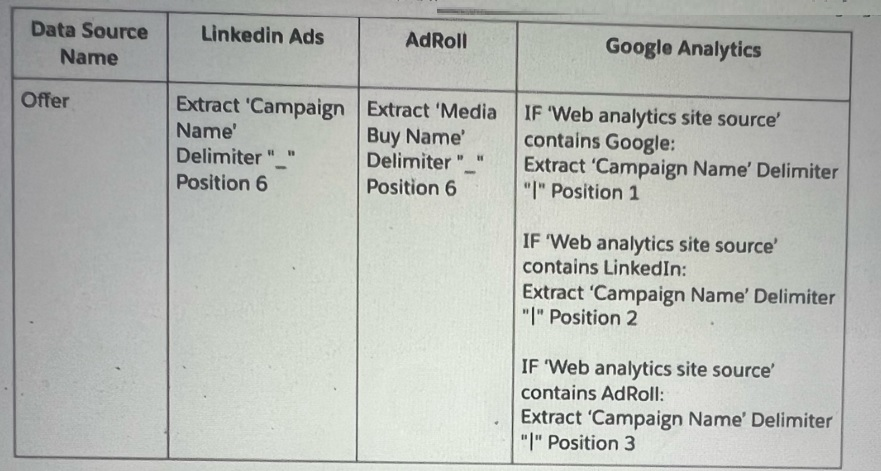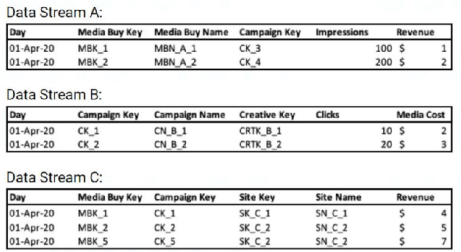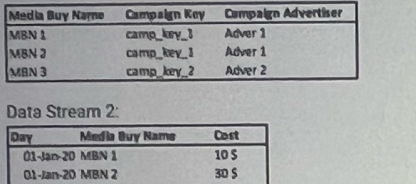At ValidExamDumps, we consistently monitor updates to the Salesforce Marketing-Cloud-Intelligence exam questions by Salesforce. Whenever our team identifies changes in the exam questions,exam objectives, exam focus areas or in exam requirements, We immediately update our exam questions for both PDF and online practice exams. This commitment ensures our customers always have access to the most current and accurate questions. By preparing with these actual questions, our customers can successfully pass the Salesforce Marketing Cloud Intelligence Accredited Professional exam on their first attempt without needing additional materials or study guides.
Other certification materials providers often include outdated or removed questions by Salesforce in their Salesforce Marketing-Cloud-Intelligence exam. These outdated questions lead to customers failing their Salesforce Marketing Cloud Intelligence Accredited Professional exam. In contrast, we ensure our questions bank includes only precise and up-to-date questions, guaranteeing their presence in your actual exam. Our main priority is your success in the Salesforce Marketing-Cloud-Intelligence exam, not profiting from selling obsolete exam questions in PDF or Online Practice Test.
Which option will yield the desired result:?
Option 4 presents two calculated measurements for 'Group Min Cost' with 'MIN' and 'AVG' aggregations. This approach aligns with the client's need for the minimum and average media cost values. 'Group Min Cost 4 MIN' will calculate the minimum media cost across the 'Media Buy Key', while 'Group Min Cost 4 FINAL' will average these minimum costs at the 'Campaign Key' level. This will yield the desired result where minimum costs are calculated at the Media Buy Key level and then averaged at the Campaign Key level.
An Implementation engineer is requested to create a new harmonization field 'Offer' and apply the following logic:

The implementation engineer to use the Harmonization Center. Which of the below actions can help implement the new dimension 'Offer?
To implement the new harmonization field 'Offer', the implementation engineer would create two separate harmonization patterns for LinkedIn and AdRoll sources, extracting the 'Campaign Name' using the specified delimiter and position. Then, within Google Analytics' mapping, a custom attribute for the 'Campaign' would be created to apply the formula logic based on the source. This allows for the harmonization of campaign data across different platforms, ensuring consistency in the reporting and analysis within Marketing Cloud Intelligence. The total patterns required would be three, one for each data source involved.
A client's data consists of three data streams as follows:
Data Stream A:

* The data streams should be linked together through a parent-child relationship.
* Out of the three data streams, Data Stream C is considered the source of truth for both the dimensions and measurements.
* Data Stream C was set as a 'Parent', and the 'Override Media Buy Hierarchy' checkbox is checked
What should the Data Updates Permissions be set to for Data Stream B?
With Data Stream C set as the 'Parent' and 'Override Media Buy Hierarchy' checked:
The appropriate setting for Data Stream B would be 'Update Attributes and Hierarchies'. This setting will ensure that the hierarchy and attributes from the parent data stream (C) are updated based on the child data stream (B) without overwriting the measurement data that the parent is the source of truth for.
The 'Override Media Buy Hierarchy' option checked indicates that the hierarchy of the parent is to be considered as the main one, but the attributes and hierarchy can still be updated from the child data stream, which aligns with option B.
A client provides the following two data streams:
Data Stream 1:

Question-
The client would like to use a VLOOKUP formula to calculate the Cost per Campaign Advertiser on January 1st 2020. Which mapping options should the client apply to obtain the expected result?
A)

B)


D)

To calculate Cost per Campaign Advertiser using a VLOOKUP formula, the client needs to look up the 'Cost' from Data Stream 2 based on a matching 'Media Buy Name' in Data Stream 1. Option A shows that 'Media Buy Name' is the lookup value, which is correct. The 'Campaign Advertiser' is then linked to the 'Cost' from Data Stream 2 through the VLOOKUP formula applied to the 'Media Buy Custom Attribute 01' in Data Stream 2. This setup will correctly associate the cost with the campaign advertiser.
A client has integrated data from Facebook Ads. Twitter ads, and Google ads in marketing Cloud intelligence. For each data source, the source, the data follows a naming convensions as ...
Facebook Ads Naming Convention - Campaign Name:
CampID_CampName#Market_Object#object#targetAge_TargetGender
Twitter Ads Naming Convention- Media Buy Name
MarketTargeAgeObjectiveOrderID
Google ads Naming Convention-Media Buy Name:
Buying_type_Market_Objective
The client wants to harmonize their data on the common fields between these two platforms (i.e. Market and Objective) using the Harmonization Center. Given the above information, which statement is correct regarding the ability to implement this request?
wet Me - Given the above information, which statement i 's Correct regarding the ability to implement this request?
Despite the different naming conventions, harmonization is possible using patterns in the Harmonization Center. By extracting the 'Market' and 'Objective' components from the naming conventions of each platform, three separate patterns would be created to map these common fields consistently across the data from Facebook Ads, Twitter Ads, and Google Ads.